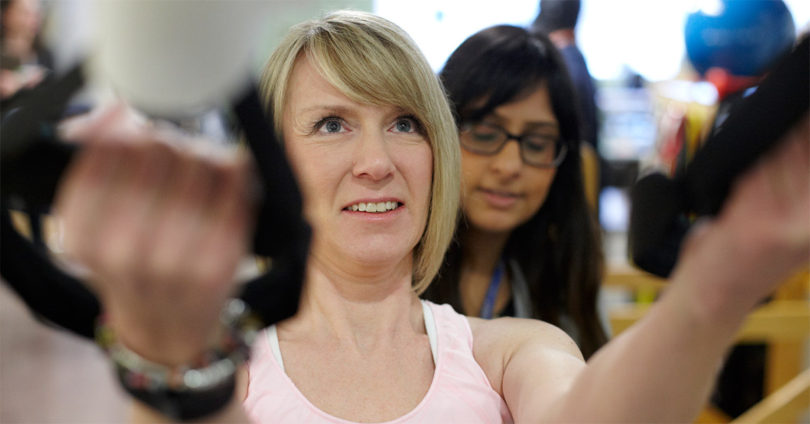If you or a loved one are in the hospital due to a serious injury or illness and are starting to feel better, the question is: what’s next in the journey to recovery? Feeling better might mean you can sit up for a while, and it might mean you feel well enough to participate in some activity, though it’s still a challenge to do things on your own.
You may be ready for rehabilitation care. “In rehab, we support you in achieving what you need to return home and to be as independent as possible,” says Mandana Jam-Modarai, an occupational therapist at Sunnybrook’s St. John’s Rehab. Whether it’s a goal to be able to return to activities of daily life such as dressing, toileting, cooking, cleaning and shopping, rehab care teams work at many stages of therapy to help patients set goals and gradually achieve them.
Here are common myths about rehab — and the facts.
Myth: To recover from pain, rest is best.
Fact: Evidence shows that bed rest can lead to muscle loss, or the tightening of muscles or tendons, that makes it difficult to move your limbs. Early activity is the best way to get back to doing things. Making yourself open to participation is key. “Keep functioning. Keep doing. Your everyday life and activities eventually become therapy,” says Mandana.
She says our bodies are designed to move, which is even more important after injury. For a patient with serious leg injuries, rehab care teams work on strengthening the upper body — shoulders, arms, and neck. Upper body strength is essential for using a walker or a cane, in order for a patient to regain as much independence as possible.
Myth: Less pain leads to more activity.
Fact: The fear of pain is more disabling than pain itself. Studies show that patients with a fear of worsening pain exhibit higher levels of inactivity. Patients who express helplessness to overcome their condition also exhibit higher levels of inactivity. “People want to do things the way they always used to,” observes Mandana. Change can be very challenging but she says, the answer lies in facing fears of the pain you might experience, while accepting a new way of doing things. It is also important to talk to your rehab care team about pain so that they can help you manage it effectively. She suggests imagining the activity you want to do step-by-step and slowly working through the fear, in consultation with the team.
Myth: Time off work really helps improve mood.
Fact: Studies actually show improved mood in most individuals, within weeks after returning to work and function. Their low moods remained the same for a year while they were on sick leave. “There is nothing more important than your ‘sense of doing’ — of contributing to society something purposeful, and to be needed and to be proud of what you do,” she says. “Our work helps us feel valued — that we are making a difference in people’s lives. Socializing with co-workers is also critical to improved mood and frame of mind.”








